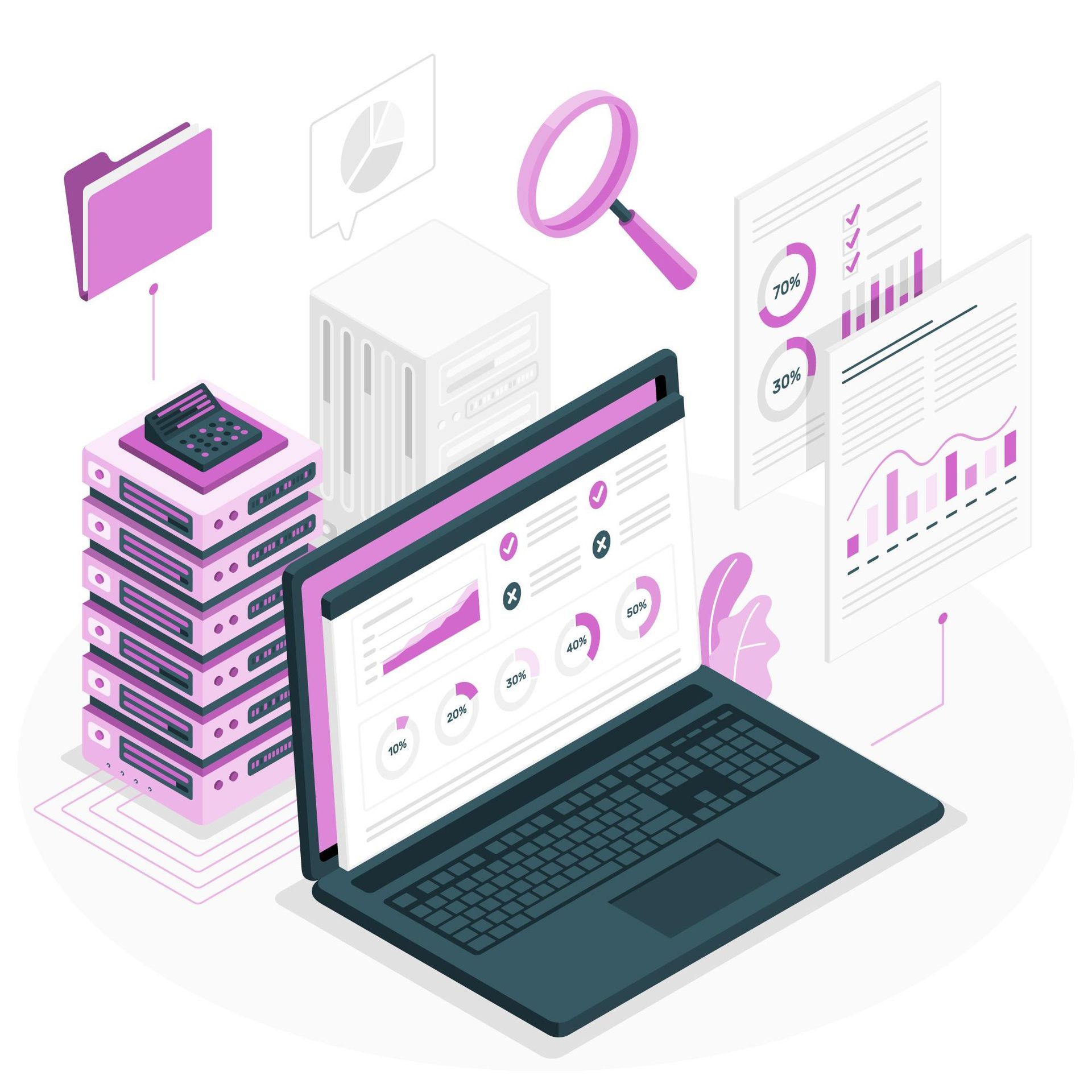Innovative Account-Based Marketing Strategies
Account-based marketing (ABM) continues to be a game-changer in the B2B marketing world, allowing businesses to focus their efforts on high-value target accounts through personalized, data-driven campaigns. But as we head into 2025, emerging technologies and market shifts are shaping the next wave of ABM strategies. From AI-driven personalization to virtual events, marketers now have exciting opportunities to make their campaigns more precise, engaging, and impactful.
If you want to stay ahead of the curve, here are the innovative ABM strategies set to redefine the landscape in 2025.
1. AI-Driven Personalization
Next-Level Personalization
Personalization has always been a pillar of ABM, but artificial intelligence (AI) is taking it to a whole new level in 2024. With the ability to process vast amounts of data quickly, AI enables marketers to create hyper-personalized experiences at scale. AI algorithms can analyze behavior, preferences, and intent data to craft messaging tailored to individual stakeholders within an account.
How AI Transforms ABM Personalization
- Predictive Analytics for Content: AI can predict which types of content will resonate best with specific accounts based on past engagement. For example, an AI tool could determine that a white paper on supply chain optimization might appeal most to a logistics company and automatically recommend it.
- Dynamic Content Creation: AI tools like ChatGPT or Jasper can generate personalized email copy, landing pages, or even chatbot scripts tailored to a specific account’s unique needs.
- Behavior-Based Triggers: AI-powered platforms can identify triggers like website visits or social media interactions and automatically launch personalized marketing workflows in response.
This technology ensures that you’re not just “personalizing,” but actually delivering what each account finds valuable based on real-time insights.
Pro Tip
Use AI not only for crafting personalized content but also for measuring its effectiveness. AI-driven platforms can analyze the success of your campaigns and suggest adjustments for even better performance.
2. Advanced Analytics for Holistic Account Insights
Data at the Core of ABM
The use of advanced analytics in ABM is set to become a non-negotiable in 2024. With the expansive availability of big data and analytics tools, marketers can gain a complete, 360-degree view of target accounts. This includes insights from intent data, buying trends, content consumption, and more.
Implementing Advanced Analytics in ABM
- Intent Data Platforms
Tools like Bombora or 6sense provide intent signals that show which companies are actively researching topics relevant to your business. This allows you to target warmer leads who are already in the decision-making phase. - Lead Scoring with Predictive Models
Predictive analytics can score accounts based on how likely they are to convert, ensuring you prioritize the ones with the highest potential. - Customer Journey Mapping
Advanced analytics can track every touchpoint a target account interacts with, allowing you to map the entire customer journey. Knowing exactly where they are in their buyer’s cycle lets you align outreach with their needs.
By integrating analytics into your ABM campaigns, you’re not just guessing—you’re acting with confidence backed by data.
Pro Tip
Use dashboards that visualize data in real-time so your sales and marketing teams can quickly adjust their strategies based on new insights.
3. Virtual Events as a Core ABM Tactic
Reimagining Engagement Through Virtual Experiences
Virtual events gained traction during the pandemic, but they’re here to stay—and for a good reason. For ABM in 2024, virtual events are more than just webinars; they’re interactive arenas where you can engage decision-makers in meaningful ways.
What Makes Virtual Events Perfect for ABM?
- High-Level Customization
Use virtual events to create tailored agendas for specific accounts or industries. For instance, you can host a virtual executive roundtable for C-suite decision-makers from a few high-value accounts. - On-Demand Content
Record your events and provide access to on-demand content. This ensures that stakeholders who couldn’t attend live can still engage with your brand. - Breakout Sessions and 1-to-1 Networking
Platforms like Hopin and Zoom offer breakout room features that allow your team to network directly with key stakeholders, answering specific questions or pitching ideas tailored to their needs.
What sets virtual events apart is their scalability—they can be small and exclusive for high-priority accounts or broader for mid-level ones, all while keeping costs manageable compared to in-person events.
Pro Tip
Pair virtual events with pre- and post-event personalized outreach, like sending customized digital invites and follow-up thank-you notes, to maintain engagement.
4. Integrated Martech Stacks
Seamless Technology Integration for Optimal Results
ABM in 2024 is as much about the tools you use as the strategies you deploy. Marketers are now focusing on building cohesive marketing technology (martech) stacks that integrate seamlessly—a trend critical for executing data-driven, multi-channel ABM campaigns.
Must-Have Martech for ABM Success
- CRM Tools (like Salesforce or HubSpot): For centralizing account data and tracking engagement across the sales and marketing funnels.
- Marketing Automation Software (like Marketo or Pardot): To streamline workflows and automate tasks such as email nurtures and content delivery.
- Account Engagement Platforms (like Demandbase or RollWorks): Purpose-built for ABM, these platforms help target accounts with precision and measure campaign effectiveness.
- AI and Analytics Tools (like Drift or 6sense): For predictive insights and better targeting of accounts showing high levels of intent.
The key is not just adopting these tools individually but ensuring they are integrated under a unified strategy. This eliminates data silos, ensuring your marketing efforts are cohesive and aligned.
Pro Tip
Choose martech tools that are scalable and can grow along with your ABM program. Regularly audit your stack to identify gaps or underperforming tools.
5. Sustainable Marketing as a Differentiator
The Growing Role of Purpose-Driven Campaigns
For 2024, sustainability is more than just a buzzword—it’s a priority for many stakeholders, including B2B decision-makers. Companies that incorporate sustainability into their ABM efforts not only differentiate themselves but also appeal to socially-conscious buyers.
How to Integrate Sustainability with ABM
- Highlight your company’s sustainability efforts in content shared with accounts (e.g., eco-friendly supply chain practices).
- Use digital marketing tactics, such as virtual events or interactive content, rather than resource-heavy in-person campaigns.
- Create content on how your offerings can help target accounts achieve their sustainability goals (e.g., reducing energy consumption through your software).
Sustainability-focused messaging is particularly impactful for large enterprises, which often have corporate social responsibility (CSR) commitments.
Pro Tip
Be genuine—avoid greenwashing, or exaggerating claims about sustainability. Provide measurable proof whenever possible.
The Future of ABM is Here
The year 2024 promises to be a pivotal time for ABM marketers. The combination of AI-driven personalization, advanced analytics, seamless multi-channel experiences, and innovative approaches like virtual events is elevating this strategy to new heights. By adopting these innovative ABM strategies, you can ensure that your campaigns stand out in a crowded market and, more importantly, deliver the results your business needs.
Whether you're fine-tuning your personalization efforts or experimenting with virtual events, there’s no better time to start. These trends aren’t just optional—they’re the new standards for successful account-based marketing. Get ahead of the competition and future-proof your ABM marketing strategy today.










